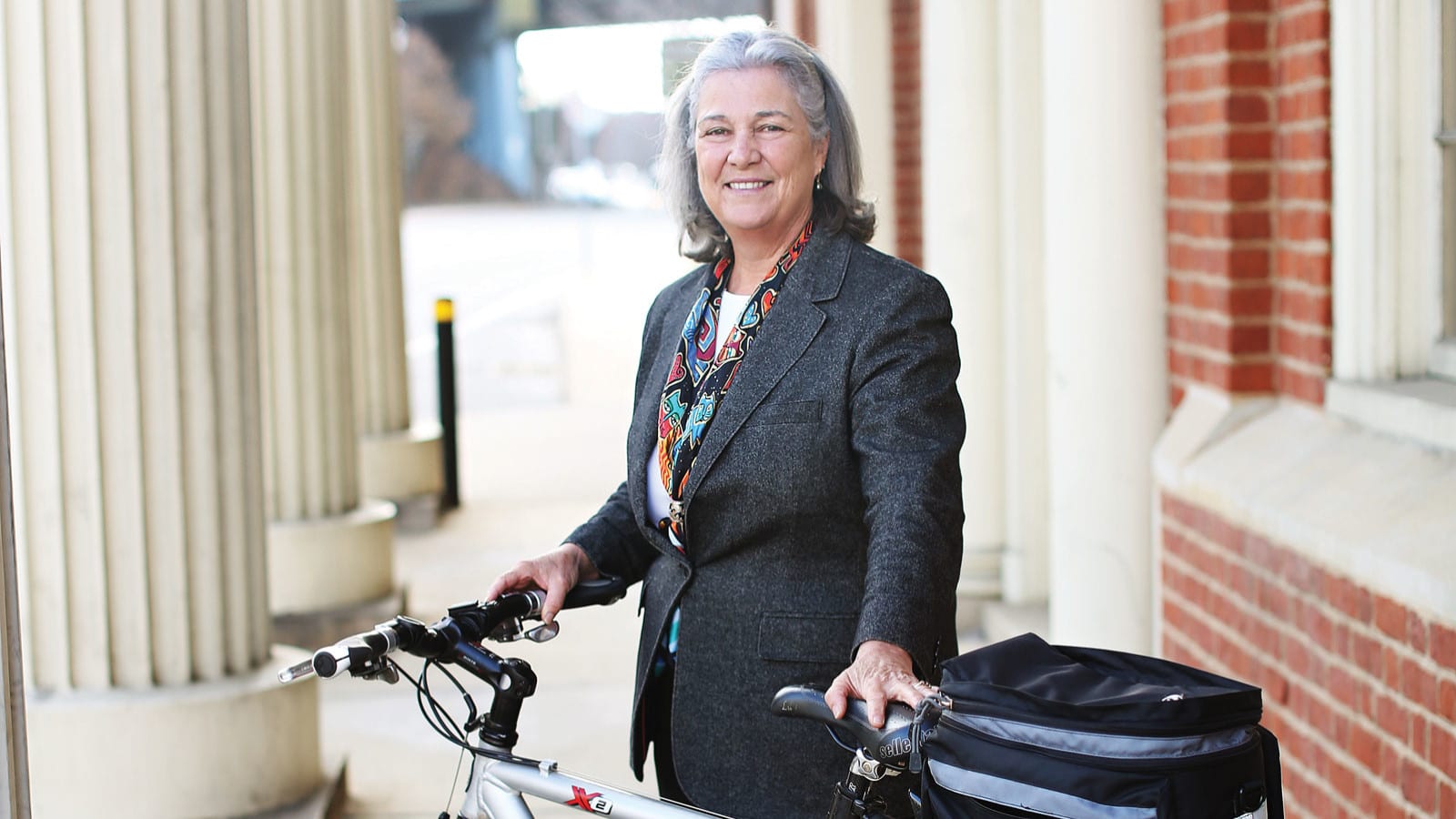Can consumer packaging ever be sustainable? Nina Goodrich ’74 brings together the players who could make it happen.
What complicates many of our society’s most pernicious environmental threats—carbon dioxide in the atmosphere, microplastics in the food chain, harmful chemicals in drinking water—is their invisibility. Nina Goodrich’s issue is just the opposite. Her problem seems to be everywhere we look.
Since 2012, Goodrich has served as executive director of the nonprofit GreenBlue, a coalition of manufacturers, retailers, and environmental advocates working to bring sustainability to the packaging industry, a business sector that has come under increasing scrutiny in an era of swirling ocean garbage gyres, overflowing landfills, and collapsing recycling markets. The Charlottesville, Virginia, group grew out of the Sustainable Packaging Coalition, founded in 2002 by architect and sustainability thought leader William McDonough, whose landmark book Cradle to Cradle: Remaking the Way we Make Things argues for the adoption of a “circular economy” where materials are either repeatedly reused or naturally degrade, but never wasted. Through partnerships, advocacy, conferences, and educational programs, GreenBlue works to encourage the innovation needed to move us toward that goal.
“Plastic in the ocean has really galvanized a number of people,” explains Goodrich, who started her career in research and development for packaging giants Amcor and Alcan, and previously managed her own consultancy firm, Sustainnovation Solutions. “And 95 percent of it we can’t see. So that gives you an idea of just how huge the magnitude of that problem is. But it’s also fixable. It’s something that we can get our hands around.”
That confidence to take on such a daunting problem was a trait encouraged by Williston, Goodrich says. Raised in Duxbury, Massachusetts, she was in the first class to attend the newly formed Williston Northampton School after its merger with Northampton School for Girls, which three of her aunts had attended. She recalls the science classes taught by Doc Gow, printing classes with Barry Moser, and the athletic programs, particularly tennis, skiing, and Outward Bound. “It really was an amazing place to go,” she says. “There’s no question that the Williston experience informed how I go about problem solving today. It was that blend of strong academics as well as athletics and art. It was those three disciplines, and being able to integrate them, that gave me a perspective in terms of how I problem solve today.”
That first year after the merger was a time of change for the school community, she recalls. “I can remember there was some question as to, did girls belong in the classrooms, but they really came through with flying colors. By the end of the year, we had had a place in those science and math classes and everybody learned together. It was such a positive atmosphere for science and math.” So positive that Goodrich went on to Mount Holyoke and then Wellesley College, earning her degree in molecular biology. She then worked briefly for a management consulting firm before moving to corporate research and development, where she specialized in packaging and food science.
Today at GreenBlue, Goodrich works with an extensive coalition of packaging industry players, reflecting the complexity of our society’s waste stream. The group’s 450 members include raw material suppliers such as paper companies and plastic producers, package manufacturers, major brands and restaurant chains, and retailers like Walmart and Target. The Environmental Protection Agency, waste management companies, universities, and civic representatives are also involved. “We like to think that we have representation from the whole value chain, and we try to create a safe space for everybody to work together on these issues,” she notes.
One recent GreenBlue program that exemplifies the group’s collaborative approach is the “How to Recycle” label, introduced in 2014, which uses graphics to show consumers how to recycle the specific parts of a package, and points out which parts they can’t. “That’s been a huge success with consumers. It takes the guesswork out of it,” Goodrich explains. “But more importantly, as a company applies for a label for something they think is recyclable, a lot of times they’ve found out they have to make tweaks or do things differently.”
Victories like this keep Goodrich positive even when the environmental news about packaging has not been. She notes that China’s recent decision to no longer import recyclables has revealed just how much work needs to be done to bring real sustainability to our waste stream. “The whole North American infrastructure and Europe has had to rethink itself and try to figure out how to process materials at home,” she says. At present, the values of materials have plummeted and recycling remains a patchwork process managed by often over-burdened municipalities. “We have not kept up with the rest of the world,” she notes. “In Europe, because they have extended producer responsibility, they have a lot more money to deal with the situation.”
But as immediate as the recycling problem is today, Goodrich notes that she is more discouraged by what it portends for the future. “One of the huge things that we’re missing is this innovation opportunity,” she explains. “As long as we deny this is happening, we’re going to lose out on the opportunities to develop the technologies for the future. We could be part of the solution. We could be contributing ingenuity to fixing the problem.”
And that’s where GreenBlue comes in, she says. “We try to bring people with different perspectives together to have that conversation about how we’re going to move forward.”

